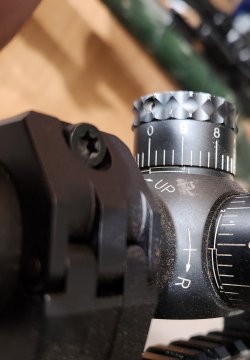I have the opportunity to shoot out to 750 in practice. I will make up a long target say 96inches of butcher paper on a frame, shoot a group of 5 at 100, then let things cool down repeating the process at 100 yard intervals. It usually takes about 5 hours to get this done. When finished I have a real world ballistics chart. No ballistic app I tried duplicated my real world results. 100 to 200 was close but then results diverged. I'm sure that I screwed up one of the data setup entries, like scope height. I've used a Labradar and oehler chronographs to record muzzle velocities, both of which provide results very close to each other. My real life ballistic chart is spot on in a hunting situation.
A lot of needless work for 600 yards small varmint size targets, and fully trust my calculations for 750 on big game. I use a 6x24 Zeiss Conquest with a ZVarmint reticle and the Zeiss Hunting app for my 6BR running 62 Grn Bergers @ 3500 fps. Once I understand how to enter the proper Coefficient, the proper scope height and the SPOT ON VELOCITY using the very capable Gamma Chrony. It's been spot on ground hog size targets out to just over 600 yards. Which is where the 6mm bullets quit doing anything but making small caliber hole on each side of the animal.
With this scope I don't even click anything. Every 50 yard aiming point is on exactly where the yardage says it is. I just set the scope to the magnification it says or the bullet and specifics it ask for with the 200 yard zero I tell I am zero'd at.
To this point, I have not tested the GEO app for anything beyond 500 yards. But at this point it seems to be spot on, once you understand the exact calculation for the rifle setup, proper BC for the bullet and speeds it is loaded to, with the correct atmospheric conditions I'm shooting in.
Scope height ideally should be measured at the Objective lens but it's not going to make a big difference.
There's several ways to skin a cat. If you wanna get anal measure overall and subtract 1/2 obj. dia. and 1/2 barrel diameter.
Personally I make a mid point mark on my scope and barrel and measure with calipers.
For all intents and purpose you can just eyeball center of scope to center of action and call it good. If you are with in 1/10 of an inch you'll be fine.
I disagree, and find this making it much harder than it needs to be. I have use the overpressure vent hole on the side of my receiver, and measure to the split on the rings. This will get you closer to the center of the scope, more important if using an MOA compensating scope base, and well withing .065" of the exact center of the diameter of any size scope tube. If you are withing .065" your DEAD ON! You can get a rough measurement .125" over that or under that and the extreme difference out to 600 yards is of no importance on big game! Now if your chasing a x's on a benchrest target,,,, this is a whole different topic! And where to zero is only applicable at one absolute range.
Well after reading all the posts and doing some more research I've decided on zeroing at 100 yds. This is solely a target rifle with occasional hunting use from a fixed position for long range shots with time to adjust my turret.
Thanks for your input and suggestions.
Soley a target rifle is totally different than for hunting! This would have been pertinent information in the beginning post!!
In the first place, for exacts use what zero is meaningless!! Terrain and everything else is meaningless since the beginning of any match is called a sight in period! Even short and long range BR you have a sight in period immediately before each relay, or unlimited sighter for your target to get absolute perfect zero! No Point blank, No ballistic program, no preset anything is close enough for the absolute point of impact required for same bullet hole accuracy, which is target shooting. Hunting is a total different requirement for what's absolute best!

